#Short Ballman
Text


Decided to doodle someone’s Ballclone oc late night as biblically accurate as possible to Ballman’s canon appearance
Also a bonus doodle of my Ballclone oc / OFFsona, Shortie in my normal art style to give a comparison between how I draw these two ballers
Also Nougat / 310 belongs to @dremisfreck
#AidenKnow#My Art#Aiden’s OCs#Traditional Art#Pencil Sketches#My Doodles#Doodles#For a friend#OFF#OFF Game#OFF (Game)#OFF Fangame#OFFSpinOFF#Panic In Ballville#PiB#Ballclone#NUMBERS#NUMBERS (OFF Fangame)#Short Ballman#Short Ballman (NUMBERS)#TW Scopophobia#Also been trying to see if drawing the clones as close to how Ballman looks like in canon#they will look older than how I draw them in my normal artstyle#The defining features arent that clear but at least they look like little 💩s like Ballman
15 notes
·
View notes
Text
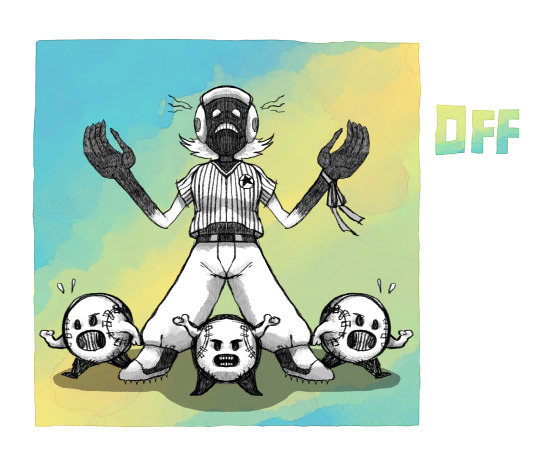
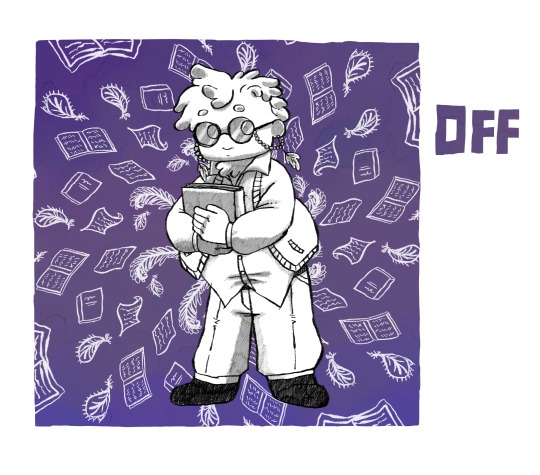
I'll start posting the art fight stuff I did (I think I didn't before)
Short Ballman for @aidenknow
Archie for @sol-rizen
40 notes
·
View notes
Note
Hello! I wanted to say thank you for gifting me Short Ballman fanart by the time I followed you on Twitter. I didn’t expect it by the time I followed you. But after that, it seems that you deleted or deactivated your Twitter so I hoping that you are okay there.
Also I appreciate some fanart of Short Ballman if you do make some more of it. Then again, thank you for gifting me the art on Twitter
Thanks for your message✨
I had already decided to delete my Twitter account before I painted that art for you. Because there were many Japanese people on Twitter who were hostile to me and I was tired of being slandered and harassed a lot by them.
So, before deleting my account, I wanted to thank you for your interest in me and sent you the drawing.
I was happy that you were pleased. I wish you much happiness in the future✨
3 notes
·
View notes
Text
A common internet myth says that Arby's is called that because RB is short for roast beef. While this is a tempting explanation at first, RB in the United States more often refers to a Running Back, a type of sweaty ballman in American football.
The idea is that after eating Arby's, you're going to be running back that meatwad sando, just through a different orifice.
0 notes
Text
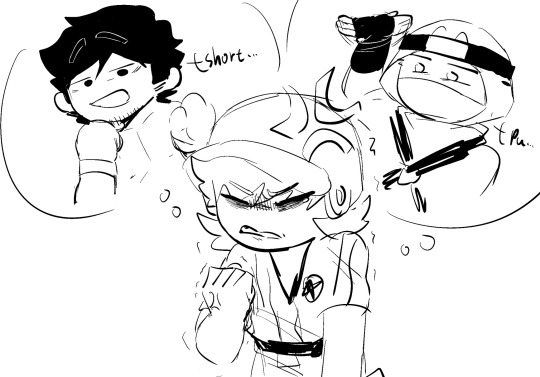





“short ballman”
11 notes
·
View notes
Photo



Brian Epstein’s Address & Telephone Book
A small leather bound pocket address and telephone book that was owned and used by Brian Epstein. The book dates to 1967 and it consists of 57 pages of addresses and telephone number some of which are typed, some of which are in Epstein’s hand and some which have been added by hand on his behalf. // (click HERE to view more pages from the book)
The book contains a total of 404 entries - a selection of them are listed below:
A
ATV Ltd
ABC Television Ltd
AIR London Ltd.
Tom Arnold Ltd
Neil Aspinall
Artistes Car Hire
Annabels [nightclub]
Alexander’s Restaurant
Ashley Steiner Famous [talent agency]
Al Aronowitz
Atlantic Records
Eric Andersen
Bob Anthony
B
Bryce Hanmer & Co [accounting firm]
Bedford, Okrent & Co
BBC Television Centre
BBC Broadcasting House
Al Brodax
Cilla Black
Mr. & Mrs. Tony Barrow
Mr. & Mrs Don Black
Bryan Barrett
Jack Barclay Ltd [Bentley dealership]
Peter Brown
Mr. & Mrs. B. Bullough
Mr. & Mrs J. Bullough
Miss J. Balmer
Mr. &. Mrs. Ivan Bennett
Eric Burdon
Francisco Bermudez
Lionel Bart
David Bailey
Bag O’Nails
Tony Barlow
Ray Bartell
Rodney Barnes
Bruno One Restaurant
Sid Bernstein
Kenn Brodziak
Leonard Bernstein
Al Bennett
Beverly Hills Hotel
Brian Bedford
Scotty Bower
David Ballman
Bob Bonis
Bill Buist
Arthur Buist
C
Dr. Norman Cowan
Curzon House Club
Crockfords Club
Clermont Club
Cromwellian Club
Paddy Chambers
Radio Caroline
Michael Codron
Cap-Estel Le
Mr. & Mrs. J. Cassen
Columbia Pictures Ltd
Eric Clapton
Capitol Records Mexico
Michael Cooper
Roger Curtis
Neil Christian
Maureen Cleave
Thomas Clyde
Cash Box
CBS Records Ltd
Denny Cordell
William Cavendish
Caprice Restuarant
David Charkham
Capitol Records
Columbia Broadcasting System
Bob Crewe
May Cunnell
Car Hire Co. for Lincoln
Dr. Kenneth Chesky
Capitol Records (Voyle Gilmore)
Irving E. Chezar
Danny Cleary
Bobby Colomby
Bob Casper
Andre Cadet
D
Daily Express
Disc & Music Echo
Decca Records
Bernard Delfont Ltd
Bernard Delfont
Noel Dixon
Jimmy Douglas
Chris Denning
Simon Dee
Rik Dane
Dolly’s [nightclub]
Hunter Davies
Terry Doran
Pat Doncaster
Norrie Drummond
Alan David
John Dunbar
Peter Dalton
Kappy Ditson
Robert Dunlap
Robert L. David
Diana Dors
Ivor Davis
Tom Dawes
Brandon de Wilde
Don Danneman
E
Malcolm Evans
Clive J. Epstein
Mr. & Mrs. H. Epstein
EMI Records Ltd
EMI Studios
Geoffrey Ellis
Etoile Restaurant
Tim Ellis
Terry Eaton
Kenny Everett
John East
Bob Eubanks
Esther Edwards
Ahmet Ertegun
F
Alan Freeman
David Frost
Georgie Fame
Robert Fraser
Andre Fattacini
Dan Farson
Billy Fury
Barry Finch
Marianne Faithfull
Robert Fitzpatrick
Warren Frederikson
John Fisher
Danny Fields
Francis Fiorino
G
Dr. Geoffrey Gray
Hamish Grimes
Derek Grainger
Rik Gunnell
Rik Gunnell Agency Ltd
Derrick Goodman & Co.
Peter Goldman
Christopher Gibbs
David Garrick
Geoffrey Grant
Mick Green
John P. Greenside
Michael Gillet
General Artists Corp.
John Gillespie
Voyle Gilmore
George Greif
Ren Grevatt
Milton Goldman
M. Goldstein
Gary Grove
Henry Grossman
H
Mr. & Mrs. Berrell Hyman
Doreen Hyman
Mr. & Mrs. Basil J. Hyman
Mrs. A. Hyman
Steve Hardy
H. Huntsman & Son Ltd
Simon Hayes
Frankie Howerd
Henry Higgins
Chris Hutchins
Tony Howard
Wendy Hanson
Marty Himmel
Casper Halpern
John Heska
Ricky Heiman
Joe Hunter
Ty Hargrove
Hullabaloo.
Walter Hofer
J
M.A. Jacobs & Son
David Jacobs [lawyer]
Dick James Music Ltd
Mr. & Mrs. D. James
Mick Jagger
Brian Jones
Michael Jeffries
Drummond Jackson
David Jacobs [d.j.]
Brian Joyce
Gerry Justice
K
Gibson Kemp
Johnathan King
Mr. & Mrs Maurice Kinn
Kingsway Recording Studios
Ashley Kozac
Kafetz Camera Ltd.
Reg King
Andrew Koritsas
Ed Kenmore
Walker Kundzicz
John Kurland
Murray Kauffman
L
Larry Lamb
Martin Landau
Kit Lambert
Dick Lester
Mr. & Mrs. Vic Lewis
Tony Lynch
Radio London
Mike Leander
John Lyndon
Bernard Lee
Kenny Lynch
Denny Laine
Lomax Alliance
Ed Leffler
David G. Lowe
Richard W. Lean
Goddard Lieberson
Laurie Records
Liberty Records
London Records
Alan Livingston
M
Melody Maker
Peter Murray
Keith Moon
Mr. & Mrs. G. Martin
Mr. & Mrs. Brian Matthew
Midland Bank Limited
Vyvienne Moynihan
Gerry Marsden
Ian Moody
Michael McGrath
Cathy McGowan
Mr. & Mrs. J. McCartney
Albert Marrion
Robin Maughan
Peter Maddok
Gordon Mills
Brian McEwan
John Mendell Jnr.
Marshall Migatz
Fred Morrow
Chruch McLaine
Vincent Morrone
Jeffrey Martin Co.
Gavin Murrell
Dean Martin
Gordon B. McLendon
Sal Mineo
Scott Manley
Bernard Mavnitte
Verne Miller
N
John Neville
Joanne Newfield
Tommy Nutter
Francisco Neuner
Tatsuji Nagasima
New Musical Express
NEMS Enterprises Ltd
Graham Nash
Nemperor Artists Ltd
Louis Nizer
Bob Nauss
Gene Narmore
O
George H. Ornstein
Olympic Sound Studios
A. L. Oldham
Myles Osternak
Roy Onsborg
P
Col. Tom Parker
Jerry Pam
Plaza Hotel
PAN AM. rep
Bob Perlman
Allen Pohju
Robert H. Prech
John Pritchard
Prince Of Wales Theatre
Don Paul
Sean Phillips
Jon Pertwee
Ricki Pipe
Dr. D. A. Pond
David Puttnam
David Puttnam Associates
Tom Parr
Harry Pinsker
Kenneth Partridge
Larry Parnes
Priory Nursing Home
Viv Prince
Steve Paul
R
Radnor Arms [pub]
Leo Rost
Keith Richard
Record Mirror
Dolly Robertson-Ward
Charles Ross
Rules Restuarant
Marian Rainford
Bobby Roberts
Bill Rosado
S
Vic Singh
Speakeasy [club]
Simon and Marijke
Simon Shops
Judith Symons
Keith Skeel
Tony Sharman
Simon Scott
Barrie Summers
John Singleton
Squarciafichi
Don Short
Dr. Walter Strach
Walter Shenson
John Sandoe Ltd
Bobby Shafto
Harry South
Brian Sommerville
Robert Stigwood
David Shaw
Chris Stamp
Aaron Schroeder
Stephen, Jacques & Stephen [law firm]
Leo Sullivan
Gene Schwann
Herb Schlosser
Gary Smith
Jim Stewart [co-founder, Stax Records]
John Simon
Jerry N. Schatzberg
Lex Taylor
Robert Shoot
Lauren Stanton
St. Regis Hotel
Eric Spiros
Howard Soloman
T
Taft Limousine Corp
[Sidney] Traxler (lawyer)
T.W.A. Ken S. Fletcher [director, public relations, TWA]
Derek & Joan Taylor
T.W.A. (Victor Page)
Martin Tempest
Evelyn Taylor
Twickenham Studios
Kenneth Tynan
Alistair Taylor
F. T. Turner & Son Ltd.
R. S. Taylor
Michael Taylor
George Tempest
Norm Talbott
U
United Artists Corp Ltd
U.P.I.
V
Klaus & Christine Voormann
V.I.P. Travel Ltd
W
Mark Warman
Gary Walker
Robert Whitaker
Peter Watkins
Peter Weldon
Mrs. Freda Weldon
Alan Warren
Orson Welles
Sir David Webster
Alan Williams
Dennis Wiley
Terry Wilson
Nathan Weiss
Norman Weiss
Gerry Wexler
Y
Murial Young
Bernice Young
Z
Peter Zorcon
79 notes
·
View notes
Text
LA’s next big earthquake could displace 270,000 people
In the three days after the Northridge Earthquake, sociologist Paul O’Brien trekked to the epicenter to collect survivors’ stories. He spoke with 31 survivors, some over the phone, but for the most part, he met people where they were lodging during those first few days and nights: on the street.
“One could not drive down any street in the Northridge section of town, and not find tents staked out on lawns, in parks, and anywhere else residents could find room,” he wrote in a research report published the same year.
Twenty five years later, experts still look back at Northridge to prepare for the inevitable: The next “Big One” will force hundreds of thousands of people out of their houses. How authorities respond to the crisis will largely determine the number of people displaced—and how long they will have to wait until they can return to home.
“It is a bit daunting if we were to have the Big One, just because LA is so big and so densely populated,” says Sonya Young-Jimenez, an emergency management coordinator for the city’s recreation and parks department, which shoulders the immense task of identifying and assessing sites for potential disaster shelters. “We’re talking hundreds of thousands of people being affected.”
The impact will be felt more intensely for some Angelenos than for others. It’s expected that those who can afford it will either flee or profit, increasing the value of their homes through renovations made with insurance payouts. Those who can’t will be left with fewer resources to pick up the pieces.
What unfolds in the aftermath could permanently change LA’s demographics, potentially exacerbating the gap between the rich and poor and even causing regional depressions. A short-term shelter crisis could evolve into a long-term community-building crisis. The general anxiety reported after natural disasters could result in so many people moving away that businesses shutter.
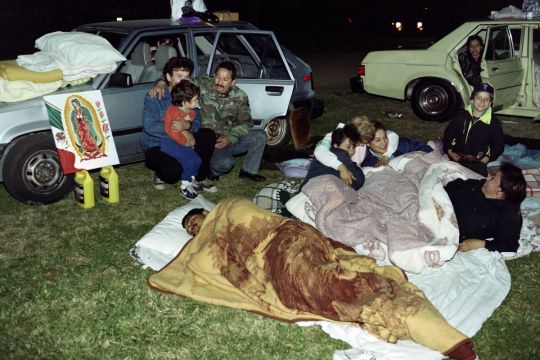
The Lopez and Garcia families camp out in a city park after their homes were heavily damaged by the Northridge earthquake.
AFP/Getty Images
In 2008, a team of scientists from the U.S. Geological Survey used complex computer models to simulate what would happen if a 7.8 magnitude earthquake struck the San Andreas fault.
The report, titled ShakeOut, estimates that quake would kill 1,800 people; rupture 966 roads, 21 railroads and 32 aqueducts; down 141 power lines; and damage 300,000 buildings.
As many as 270,000 people across Southern California would be displaced from their homes. About 500 public shelters would be needed to house roughly 175,000 of those people—nearly double the population of Santa Monica—because they wouldn’t be able to find shelter with family or friends or in hotels.
The biggest issues first responders and evacuees will face won’t be the ones caused by the quake itself. The real trouble will start after the ground stops shaking, says Lucy Jones, seismologist and author of The Big Ones: How Natural Disasters have Shaped Us.
Fires, water shortages, limited transit, job accessibility, and communication outages like the loss of cell phone service will exacerbate the damage and displacement.
“You get this compounding problem,” says Jones. “The economic system works because we all feed on each other. If employees aren’t going to work, then they’re also not going to eat at the nearby restaurant. Every one individual job has impact.”
Today, rising temperatures and changing intensity of winds could potentially be survivors’ worst enemy. As Jones laments, the Santa Ana Winds could stoke fires sparked by the quake, into fires not unlike the Woolsey and Camp Fires at the end of 2018.
Those issues could be complicated by the current homelessness crisis, leaving hundreds of thousands of Angelenos without temporary or even short-term shelter.
Officials are acutely aware that LA’s worsening housing shortage could raise the number of people displaced after a disaster. If hundreds or thousands of housing units were made inhabitable due to earthquake damage, even more people would be searching for new places to live.
Last year’s horrific wildfires are a tragic example, with tens of thousands of people displaced from the Camp Fire swamping the city of Chico.
The fires have presented incoming California Gov. Gavin Newsom and his office of emergency services an opportunity to change the way the state responds and delivers aid.
“That we still have a lot of people in shelters is indicative that we’re still learning,” says Tina Curry, the department’s deputy director of planning and preparedness. “But sometimes shelter operations can be extended and we’ll have to learn to support that.”
A loss of housing after the Woolsey Fire has created a surge in renters and spikes in listings, forcing the city of Malibu to put price gouging rules into place indefinitely.
Hefty payouts from insurance companies also fuel the problem. Updating insurance policies to a loss-of-use type is an effective way to prepare for a disaster, but as Jason Ballman, communications manager at the Southern California Earthquake Center emphasized, it also has priced people who don’t have insurance, or can’t afford it, out of the game.
In the case of Malibu and the Woolsey Fire, “some people who lost homes—and could afford it—simply left the country for the rest of the year,” Sandro Dazzan, real estate agent with The Agency told The Real Deal.
In 1994, people who could afford it named the earthquake as the catalyst for leaving California for good, as the New York Times chronicled in a 1994 article. As experts point out, and as the Los Angeles Times has reported, the population in Los Angeles has only ever dipped four times—two of those times occurring in the years following the Northridge quake.
If Californians were to flee, all eyes are on Arizona as the most probable state to absorb SoCal’s potential refugees—so much so that Phoenix leaders spent the latter part of 2018 running drills in the event that the Big One does come.
But what happens to those who choose not to leave?
Data collected after Northridge indicates people will head outside, to parks, open areas, anything away from a building, as long as it’s relatively near their own homes.
The recreation and parks department is preparing for many people to form tent camps in open spaces or on their front lawns. Official shelters, like those operated by the Red Cross and other agencies, will be set up in recreation facilities and public buildings.
“We do assessments of all our sites,” said Young-Jimenez. “And our partner is the Red Cross. Every week they’re assessing something. It’s pretty much ongoing.”
For many others, staying in LA will not be a choice.
“One statistic claims that for affluent white men, it takes an average of seven days to return home post-disaster, but for poor women of color, it takes an average of seven years,” says ShakeOut co-author Dennis Mileti, retired sociologist and director emeritus of the Natural Hazards Center at the University of Colorado at Boulder, citing findings published by natural disaster sociologist Robert Bolin after the Whittier Narrows Earthquake in 1987.
“I keep telling people: Stop worrying about the earthquake killing you, start worrying about the earthquake bankrupting you.”
Young-Jimenez’s department is using software that layers socioeconomic data on top of geographic and seismic data to model potential scenarios. The models can be used to identify how poorer areas of the city—those with older homes that most likely haven’t been retrofitted—would be affected by a major earthquake, in comparison to more affluent areas.
The reality is that earthquakes are indiscriminate. As Jones puts it: “Earthquakes shake everybody.”
But because of the difference in quality of infrastructure and lack of accessible resources people in lower-income communities face, the effects are often not.
“If you’re poor, you’re more likely to live in substandard housing, and be in a job that says to you, ‘Oh hell, give up,’” Jones says. “I keep telling people: Stop worrying about the earthquake killing you, start worrying about the earthquake bankrupting you.”
It’s also essential to consider where people come from, says Joselito Garcia-Ruiz, regional disaster program officer for the Red Cross’s LA Region.
“I came to work during Northridge, and I saw with my own eyes that many people from Central America and Mexico at that time were afraid to go inside the shelters, because they came from the ’85 earthquake in Mexico and they brought with them that experience,” he said.
While the long-term effects of a major quake could forever alter the economic and cultural landscape of Los Angeles—potentially sending its most vulnerable communities into economic depression while more affluent residents flee—there may be another surprising outcome.
Natural disasters are also good at knocking down social barriers.
Those unplanned shelters that popped up in 1994 were established not only out of convenience, but because of the bonds that had formed across walls both real and socially constructed. People—neighbors who may not have known each other until their homes were destroyed—wanted to be near each other.
“Even people who before a disaster hated each other, will end up hugging and kissing each other,” said Mileti. “It brings the best out in humanity.”
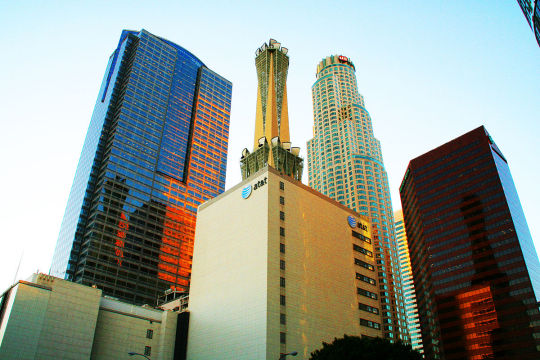
Source: https://la.curbed.com/2019/1/15/18182585/earthquake-california-evacuation-shelter-predictions
0 notes
Text
LA’s next big earthquake could displace 270,000 people
In the three days after the Northridge Earthquake, sociologist Paul O’Brien trekked to the epicenter to collect survivors’ stories. He spoke with 31 survivors, some over the phone, but for the most part, he met people where they were lodging during those first few days and nights: on the street.
“One could not drive down any street in the Northridge section of town, and not find tents staked out on lawns, in parks, and anywhere else residents could find room,” he wrote in a research report published the same year.
Twenty five years later, experts still look back at Northridge to prepare for the inevitable: The next “Big One” will force hundreds of thousands of people out of their houses. How authorities respond to the crisis will largely determine the number of people displaced—and how long they will have to wait until they can return to home.
“It is a bit daunting if we were to have the Big One, just because LA is so big and so densely populated,” says Sonya Young-Jimenez, an emergency management coordinator for the city’s recreation and parks department, which shoulders the immense task of identifying and assessing sites for potential disaster shelters. “We’re talking hundreds of thousands of people being affected.”
The impact will be felt more intensely for some Angelenos than for others. It’s expected that those who can afford it will either flee or profit, increasing the value of their homes through renovations made with insurance payouts. Those who can’t will be left with fewer resources to pick up the pieces.
What unfolds in the aftermath could permanently change LA’s demographics, potentially exacerbating the gap between the rich and poor and even causing regional depressions. A short-term shelter crisis could evolve into a long-term community-building crisis. The general anxiety reported after natural disasters could result in so many people moving away that businesses shutter.
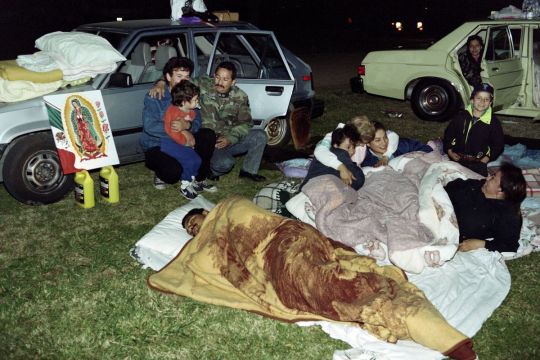
The Lopez and Garcia families camp out in a city park after their homes were heavily damaged by the Northridge earthquake.
AFP/Getty Images
In 2008, a team of scientists from the U.S. Geological Survey used complex computer models to simulate what would happen if a 7.8 magnitude earthquake struck the San Andreas fault.
The report, titled ShakeOut, estimates that quake would kill 1,800 people; rupture 966 roads, 21 railroads and 32 aqueducts; down 141 power lines; and damage 300,000 buildings.
As many as 270,000 people across Southern California would be displaced from their homes. About 500 public shelters would be needed to house roughly 175,000 of those people—nearly double the population of Santa Monica—because they wouldn’t be able to find shelter with family or friends or in hotels.
The biggest issues first responders and evacuees will face won’t be the ones caused by the quake itself. The real trouble will start after the ground stops shaking, says Lucy Jones, seismologist and author of The Big Ones: How Natural Disasters have Shaped Us.
Fires, water shortages, limited transit, job accessibility, and communication outages like the loss of cell phone service will exacerbate the damage and displacement.
“You get this compounding problem,” says Jones. “The economic system works because we all feed on each other. If employees aren’t going to work, then they’re also not going to eat at the nearby restaurant. Every one individual job has impact.”
Today, rising temperatures and changing intensity of winds could potentially be survivors’ worst enemy. As Jones laments, the Santa Ana Winds could stoke fires sparked by the quake, into fires not unlike the Woolsey and Camp Fires at the end of 2018.
Those issues could be complicated by the current homelessness crisis, leaving hundreds of thousands of Angelenos without temporary or even short-term shelter.
Officials are acutely aware that LA’s worsening housing shortage could raise the number of people displaced after a disaster. If hundreds or thousands of housing units were made inhabitable due to earthquake damage, even more people would be searching for new places to live.
Last year’s horrific wildfires are a tragic example, with tens of thousands of people displaced from the Camp Fire swamping the city of Chico.
The fires have presented incoming California Gov. Gavin Newsom and his office of emergency services an opportunity to change the way the state responds and delivers aid.
“That we still have a lot of people in shelters is indicative that we’re still learning,” says Tina Curry, the department’s deputy director of planning and preparedness. “But sometimes shelter operations can be extended and we’ll have to learn to support that.”
A loss of housing after the Woolsey Fire has created a surge in renters and spikes in listings, forcing the city of Malibu to put price gouging rules into place indefinitely.
Hefty payouts from insurance companies also fuel the problem. Updating insurance policies to a loss-of-use type is an effective way to prepare for a disaster, but as Jason Ballman, communications manager at the Southern California Earthquake Center emphasized, it also has priced people who don’t have insurance, or can’t afford it, out of the game.
In the case of Malibu and the Woolsey Fire, “some people who lost homes—and could afford it—simply left the country for the rest of the year,” Sandro Dazzan, real estate agent with The Agency told The Real Deal.
In 1994, people who could afford it named the earthquake as the catalyst for leaving California for good, as the New York Times chronicled in a 1994 article. As experts point out, and as the Los Angeles Times has reported, the population in Los Angeles has only ever dipped four times—two of those times occurring in the years following the Northridge quake.
If Californians were to flee, all eyes are on Arizona as the most probable state to absorb SoCal’s potential refugees—so much so that Phoenix leaders spent the latter part of 2018 running drills in the event that the Big One does come.
But what happens to those who choose not to leave?
Data collected after Northridge indicates people will head outside, to parks, open areas, anything away from a building, as long as it’s relatively near their own homes.
The recreation and parks department is preparing for many people to form tent camps in open spaces or on their front lawns. Official shelters, like those operated by the Red Cross and other agencies, will be set up in recreation facilities and public buildings.
“We do assessments of all our sites,” said Young-Jimenez. “And our partner is the Red Cross. Every week they’re assessing something. It’s pretty much ongoing.”
For many others, staying in LA will not be a choice.
“One statistic claims that for affluent white men, it takes an average of seven days to return home post-disaster, but for poor women of color, it takes an average of seven years,” says ShakeOut co-author Dennis Mileti, retired sociologist and director emeritus of the Natural Hazards Center at the University of Colorado at Boulder, citing findings published by natural disaster sociologist Robert Bolin after the Whittier Narrows Earthquake in 1987.
“I keep telling people: Stop worrying about the earthquake killing you, start worrying about the earthquake bankrupting you.”
Young-Jimenez’s department is using software that layers socioeconomic data on top of geographic and seismic data to model potential scenarios. The models can be used to identify how poorer areas of the city—those with older homes that most likely haven’t been retrofitted—would be affected by a major earthquake, in comparison to more affluent areas.
The reality is that earthquakes are indiscriminate. As Jones puts it: “Earthquakes shake everybody.”
But because of the difference in quality of infrastructure and lack of accessible resources people in lower-income communities face, the effects are often not.
“If you’re poor, you’re more likely to live in substandard housing, and be in a job that says to you, ‘Oh hell, give up,’” Jones says. “I keep telling people: Stop worrying about the earthquake killing you, start worrying about the earthquake bankrupting you.”
It’s also essential to consider where people come from, says Joselito Garcia-Ruiz, regional disaster program officer for the Red Cross’s LA Region.
“I came to work during Northridge, and I saw with my own eyes that many people from Central America and Mexico at that time were afraid to go inside the shelters, because they came from the ’85 earthquake in Mexico and they brought with them that experience,” he said.
While the long-term effects of a major quake could forever alter the economic and cultural landscape of Los Angeles—potentially sending its most vulnerable communities into economic depression while more affluent residents flee—there may be another surprising outcome.
Natural disasters are also good at knocking down social barriers.
Those unplanned shelters that popped up in 1994 were established not only out of convenience, but because of the bonds that had formed across walls both real and socially constructed. People—neighbors who may not have known each other until their homes were destroyed—wanted to be near each other.
“Even people who before a disaster hated each other, will end up hugging and kissing each other,” said Mileti. “It brings the best out in humanity.”
Source: https://la.curbed.com/2019/1/15/18182585/earthquake-california-evacuation-shelter-predictions

0 notes
Photo

NUWFOR Fashion Men's Stretch Pocket Casual Slim Sweatpants Pencil Jeans Trousers Pants
https://huntinggearsuperstore.com/product/nuwfor-fashion-mens-stretch-pocket-casual-slim-sweatpants-pencil-jeans-trousers-pants/
men mens jeans for ariat fr suko sknny bk straight fit pant ytd american eagle s fur rock revival demi hip lined slim big and tall rsq neoblue tan jean jacket ky lv elastic waist aj dk jenco pants chains van edc vest bib star dad designer apt ufo mk jooger enyce shirt axe gant belts s jaket dope qazel gs denzin mankind feeson rangler lrg fce rep enzo x zamage waimea next joe blue key work colored silver ltb ballman denum az cuff zebu huf men safado jeans mavi mens fog bcc for best x belts mom ucb fubu jean jacket with fur stretchy waist afliction womens black xray joes jabo flex wrangler blue ag adriano goldschmied lea zaddic shirts fashion bootcut all mankind eko brown airit akoo eagle navy eipped jogger cargo green hudson gray aowofs young rsq robin casual apc bdg axl straight yoyeah baggyamazon beat gstar cut shorts kybrand sean john axis lined chap sherpa furor prp jeans relaxed fit men mens for izod blue relax women womens fashion ladies dickies carpenter ariat biker s straight khaki s lined bootcut boys waist tan black cinch white bke fce bcc ky stretch rustler cargo low rise skinny lowrise xs ymi wax mudd scoundrel boot cut jean ag eunina ripped super shorts jr womans flare juniors lei e distressed denim plus size kancan ultra wrangler dungaree riggs frc fr s dxl dungarees dickys
0 notes
Text

Clone 49: A Ballman clone that wears a modified helmet which has a helmet guard in order to protect himself while monitoring Boxxer’s whereabouts. This is so Ballman can plan an attack on Boxxer in advance.
I tried to add more doodles in this page since there are a few empty spaces left, but I gave up when I got art block. So here ya go!!
Clone 94 belongs to @htz-sany
#AidenKnow#My Art#For a friend#Gift for a friend#Traditional Art#Pencil Sketch#Doodles#OFF#OFF Game#OFF (Game)#OFF Fangame#OFF SpinOFF#Panic in Ballville#PiB#NUMBERS#NUMBERS (OFF Fangame)#Ballgnome#Ballgnome (OFF)#Ballgnome (PiB)#Short Ballman#Short Ballman (NUMBERS)#Clone 94#Clone 94 (NUMBERS)#Also yes I got my friend’s permission to allow me to add her ballclone OC to my fangame that I dont know when it will be released
18 notes
·
View notes
Note
Hi I was wondering since you love the queen do you have any headcannons about her? I'm asking for um science
I have actually never been asked this, this is a really thought provoking question.
I really like the idea of, like Dedan said, “By the queen’s thousand faces!” that she does, indeed, have different faces. Not in the way of, for example, being two-faced, but everyone sees her differently. Mortis even drew her three different ways when I asked him to draw her. If that’s not proof, I’m not sure what is.
I love the idea of her crown floating with her, whether it is the Crown of the Dead, or the intricate design Mortis started drawing her with in the first picture set he drew, but didn’t finish. The Crown of the Dead seems to be important to her. It uses the competence, “Aspirating Suzerain” which only heals itself. If you look at the meaning of those words and put them together, it means, in my opinion after I spent some time looking up and researching each word, the ambition of a sovereign (supreme ruler/monarch). It heals itself through the hopes of a ruler, especially a monarch. And we know a certain Queen who had great aspirations for the world she rebuilt. I completely associate her with that crown. But, uneasy lies the head that wears a crown.
The idea of her having tentacle arms opposed to having hands always intrigued me. It explains her design in the game but Mortis has been drawing her with hands recently. The tentacle arms are colored dark like her skin so they definitely are part of her and not her dress. It appears her left one is the one wrapped around her waist and the other is crossed behind her back. I think they are some sort of tentacle of some sort or, because of the recent art, she can transform them into either. Her concept art of the, “Bad Queen” has the huge hands and long fingers too that almost look like the tentacle. Though one huge finger would be very weird. I prefer the tentacles for the game canon. But maybe she has tentacles because that’s the way the Batter sees her and, in the recent art which could be considered how WE see her, she has hands. I like that idea.
I believe she is the most powerful being in the game but the Batter was made to be unbeatable. When you get a Game Over screen, it is obviously because the Batter died. But no one else sees that except us. In the canon of the game, the Batter goes from Zone 0 to Hugo in one try. He was made in the image of Ballman from The Panic in Ballville. We see the Boxxer as the hero, but unable to win due to the overwhelming number of clones. Meaning, Ballman (a person who plays ball, slang for baseball. You know, like a batter) is unable to lose and, even in the short time we are in the comic, it’s assumed Boxxer was overwhelmed. Ballman was unable to lose, the Batter was unable to lose since he was created that way. It wasn’t that the Queen was weak (maybe she was from rebuilding the world), but she had no chance because of how the Batter was created.
I’ll wrap this up, because this is getting lengthy.
When she is drawn as the sun during The Room, the sun stands for her because of her being the life-force of the zones. She uses her energy (I might be paraphrasing pretty bad but bear with me) to possibly create the all of the elements and send them to the zones. The one that is specifically mentioned is plastic. Plastic is shown as solid objects that are soft and safe for Elsen, and is shown in liquid form that looks like water, which is really essential for life to humans. Elsen are said to be clones of one human (Felix told me this, he spoke to Mortis about it) and are all affected by a strange disease (maybe they require it to survive like us). Plastic is sent to the zones to be transformed into objects but is never said to be drank or consumed; another thing that’s never explained. What I’m getting at is, like the sun, she is essential to the survival of everything and everyone in the zones. She radiates her energy, like our sun, to the world.
And also, she has sang, “You are my Sunshine” to Hugo at least once.
Maybe she is also like the sun because she is never always around for Hugo. When she is gone, it’s darkness, a fear of his. When she is there, she lightens up his life.
I hope you enjoy this answer. It was incredibly fun the write.
58 notes
·
View notes
Link
Journal of the American Geriatrics Society Research Summary
Older women are at higher risk for developing breast cancer than younger women are—almost half of all breast cancer cases, and most breast cancer deaths, occur in women who are 65 or older. Despite this, we know very little about how breast cancer and its treatments affect older women. In particular, we don’t fully understand how the disease and chemotherapy treatments affect a woman’s ability to function and perform daily activities.
For older adults, knowing how chemotherapy may affect you is important, especially if there’s a chance it could affect your ability to live independently. Understanding your risk for such problems would be good information to have when it comes to choosing treatments.
To learn more about how breast cancer and its treatments might affect older women’s abilities to function, a team of researchers designed a study. They published their results in the Journal of the American Geriatrics Society.
The researchers reviewed information from an earlier study, which included 633 women aged 65 or older who had been diagnosed with breast cancer. That study compared the effectiveness of two different chemotherapy treatments. Researchers of that study asked participants questions, including:
Do you have trouble with strenuous activities, like carrying a heavy shopping bag?
Do you have any trouble taking a long walk?
Do you have any trouble taking a short walk outside the house?
Do you need to stay in bed or in a chair during the day?
Do you need help with eating, dressing, washing yourself, or using the toilet?
In their new study, the researchers’ goal was to learn about changes in the participants’ ability to perform daily activities after the participants received chemotherapy. The researchers also wanted to learn more about why some women lost some of their abilities—or experienced a decline—in performing daily activities, and why other women were able to recover the abilities they had before their treatment.
The researchers said that their findings might help identify breast cancer survivors at risk of physical function decline and might shed light on future treatments designed to decrease this risk.
The researchers learned that short-term decline in physical function was common among older adults treated with chemotherapy for breast cancer. In the study, almost half (42 percent) of the participants experienced a decrease in their ability to function from pre-chemotherapy to the end of treatment. And almost one-third (30 percent) of the participants experienced a decline in their ability to function from before they started chemotherapy to 12 months later.
Among patients who experienced physical function decline from before chemotherapy to end of chemotherapy, about half (47 percent) were resilient, meaning they “bounced back” to the activity level they previously had within 12 months after starting chemotherapy treatment.
The impact of treatment on physical function is an important consideration for older adults. Functional decline is associated with loss of independence and increased risks for hospitalization and nursing home placement.
Interestingly, some older adults who experience problems performing their daily activities after cancer treatment are able to bounce back. Also known as “resilience,” this process of recovery is considered vital to successful aging. Resilient older adults may be more able to recover after a stressful experience like chemotherapy.
“In our study, about half of the patients who experienced functional decline were able to ‘bounce back’ to their former function, and we considered them to be physically resilient,” said the researchers. “We also learned that half of the patients were resistant to decline, and maintained their functional status throughout treatment,” they added.
Risk factors for functional decline one year after chemotherapy included:
Fatigue
Having breathing difficulties
Being unmarried or lacking social support, such as assistance from family and friends
Poor appetite, which could indicate poor nutrition and/or depression
The helpful actions that could increase ability to “bounce back” include:
Diet and exercise programs. One study showed that starting a diet and exercise program within 18 months of breast cancer diagnosis is linked to an improvement in the ability to function.
Behavior Interventions. In one study, 49 percent of older, overweight survivors of breast, colorectal, and prostate cancer who enrolled in a two-year exercise, diet, and weight-loss program did not experience a decline in their abilities to function. In fact, 57 percent recovered to their pre-treatment level.
This summary is from “Functional Decline and Resilience among Older Women Receiving Adjuvant Chemotherapy for Breast Cancer.” It appears online ahead of print in the Journal of the American Geriatrics Society. The study authors Arti Hurria, MD; Enrique Soto-Perez-de-Celis, MD; Jacob B. Allred, MS; Harvey Jay Cohen, MD; Anait Arsenyan, MPH; Karla Ballman, PhD; Jennifer Le-Rademacher, PhD; Aminah Jatoi, MD; Julie Filo, BS; Jeanne Mandelblatt, MD, MPH; Jacqueline M. Lafky, MS; Gretchen Kimmick, MD, MS; Heidi D. Klepin, MD, MS; Rachel A. Freedman, MD, MPH; Harold Burstein, MD, PhD; Julie Gralow, MD; Antonio C. Wolff, MD; Gustav Magrinat, MD; Myra Barginear, MD; and Hyman Muss, MD.
The post Does Chemotherapy Harm Ability to Function for Older Women with Breast Cancer? appeared first on Age Specific.
0 notes
Text

Something for Pride Month 🏳️🌈💫
#AidenKnow#Aiden’s Birthday#My Art#Digital Art#OFF#OFF Fangame#OFF SpinOFF#NUMBERS#NUMBERS (OFF Fangame)#Short Ballman#Short Ballman (NUMBERS)#Demisexual#Platoniromantic#Omnisexual#Omniromantic#Genderfluid#Non-Binary#Enby#Non Binary#Transgender#NonBinary#Trans#LGBTQ
11 notes
·
View notes
Text

“Because love can burn like the cigarette,
and leave you alone with nothin’,
and leave you alone with nothin’”
Should’ve posted this since months ago by the time it looks like it has been already done even after going through art block in refining the details
(Reference is placed under the cut)

Here is the original that is used for the redraw. One of TV Girl’s album cover: French Exit
#AidenKnow#My Art#Digital Art#Rendered Art#OFF#OFF Fangame#OFF SpinOFF#RUPTURE#RUPTURE (OFF Fangame)#Rien#Rien (RUPTURE)#NUMBERS#NUMBERS (OFF Fangame)#Short Ballman#Short Ballman (NUMBERS)#TV Girl
6 notes
·
View notes
Text
“It’s not gay…


…when it’s your best friend”
#AidenKnow#Traditional Art#My Art#Pencil Sketch#OFF#OFF Fangame#OFF SpinOFF#NUMBERS#NUMBERS (OFF Fangame)#Short Ballman#Short Ballman (NUMBERS)#RUPTURE#RUPTURE (OFF Fangame)#Rien#Rien (RUPTURE)#Gay men kissing#Gay#Gay gay homosexual#If you see this Omni pretend you don’t see it 🏃🏃🏃#Btw that’s Rien if he is actually human so ye#And it’s freaking old since last year GRAHHHH
3 notes
·
View notes
Text



Okay here’s the torso drawing for the simps >:))
Some anatomy practice on drawing torsos of the PiB characters (minus Daisy because nope)


Also an addition to the batch with human! Rien and Short Ballman!! :DD
#AidenKnow#My Art#Digital Art#OFF#OFF Game#OFF (Game)#OFF Fangame#OFF SpinOFF#Panic in Ballville#PiB#Continue Stop Rise#CSR#CSRVerse#Boxxer#Ballman#Magenta Ninja#Rien#Short Ballman#Boxxer (OFF)#Boxxer (PiB)#Ballman (OFF)#Ballman (PiB)#Magenta Ninja (CSR)#Magenta Ninja (CSRVerse)#RUPTURE#RUPTURE (OFF Fangame)#Rien (RUPTURE)#NUMBERS#Short Ballman (NUMBERS)#NUMBERS (OFF Fangame)
11 notes
·
View notes